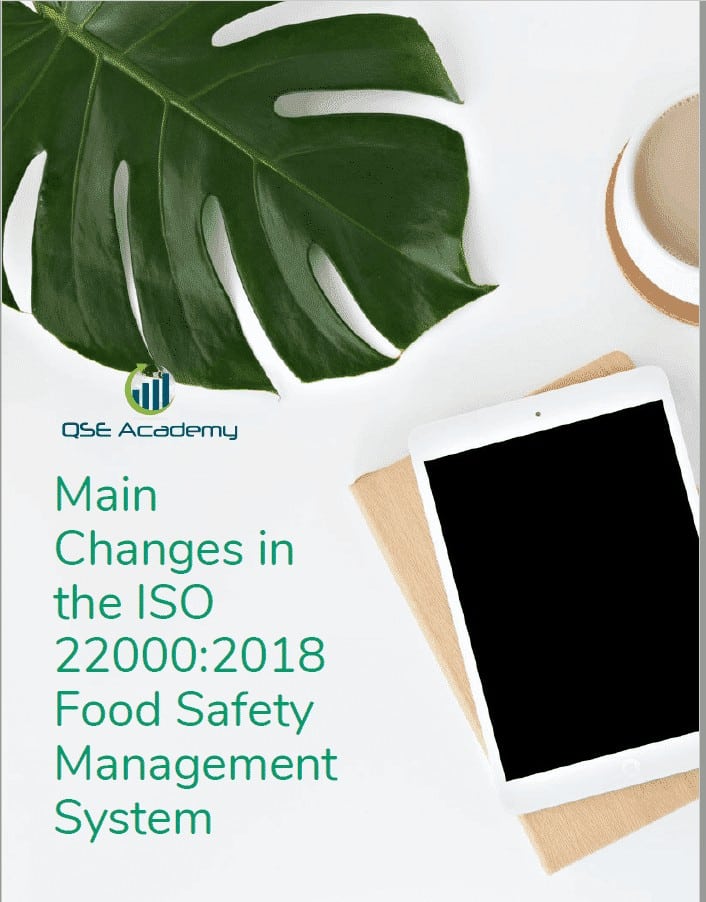A CEO’s Guide to BRC V9: What You Need to Know for Food Safety Success
Embarking on the journey to BRC V9 compliance can seem like a daunting task. As a CEO or business owner, you understand the importance of food safety and the value of meeting internationally recognized standards. That’s why, in this comprehensive guide, I’ll break down the essentials of BRC V9 to help you navigate this critical standard with ease.
BRC V9: The Basics
The British Retail Consortium (BRC) Global Standard for Food Safety is a globally recognized certification program that sets rigorous standards for food manufacturing and supply chain management. With its latest version, BRC V9, the standard aims to provide even greater assurance of food safety, quality, and operational controls.
Key elements of the BRC V9 standard include:
Senior management commitment:
Ensuring that top-level management is actively involved in implementing and maintaining food safety systems.
Hazard analysis and critical control points (HACCP):
Identifying and controlling potential food safety hazards throughout the production process.
Quality management system:
Establishing comprehensive systems to ensure consistent production of safe, high-quality products.
Site standards:
Ensuring that facilities meet strict requirements for cleanliness, layout, and product flow.
Product control:
Implementing measures to manage allergens, contaminants, and other potential risks.
Process control:
Establishing robust procedures for monitoring and controlling critical processes in production.
Personnel:
Ensuring that staff is properly trained, supervised, and provided with appropriate facilities and protective clothing.
Acme Foods Inc.
To illustrate how BRC V9 can impact a business, let’s examine the case of Acme Foods Inc., a US-based food manufacturer. The company faced recurring issues with product contamination, resulting in costly recalls and damage to its reputation.
Recognizing the need for change, Acme Foods decided to pursue BRC V9 certification. The company invested in a comprehensive HACCP plan, revamped its quality management system, and trained employees on new food safety protocols. As a result, Acme Foods significantly reduced contamination incidents and regained customer trust.
Keys to BRC V9 Success
Here are some essential tips to help you succeed with BRC V9 implementation:
Foster a strong food safety culture:
Your entire organization must understand and embrace the importance of food safety. This includes fostering open communication, providing ongoing training, and recognizing employee contributions.
Stay current with industry trends:
Food safety is an ever-evolving field. Stay informed about emerging risks, new technologies, and best practices to ensure ongoing compliance.
Invest in internal audits:
Regularly evaluate your food safety systems to identify areas for improvement and demonstrate commitment to continuous improvement.
Embracing Technology for BRC V9 Compliance
In today’s fast-paced world, technology plays a crucial role in streamlining food safety management systems. Leverage innovative solutions to support your BRC V9 compliance efforts:
Digitize documentation:
Migrate from paper-based systems to digital platforms for easier access, updating, and sharing of crucial documents. This will also help you maintain version control and reduce the risk of lost or outdated information.
Automate monitoring and reporting:
Implement automated data collection and analysis tools to ensure real-time monitoring of critical control points, allowing you to act swiftly in case of deviations.
Utilize traceability solutions:
Adopt advanced traceability systems to track ingredients and finished products throughout the supply chain, ensuring transparency and facilitating recalls when needed.
The Benefits of BRC V9 Certification
Achieving BRC V9 certification offers numerous advantages for your organization, including:
Enhanced reputation:
BRC V9 certification demonstrates your commitment to food safety, boosting your credibility among customers, suppliers, and regulators.
Access to new markets:
Many retailers and food service providers require BRC certification from their suppliers, opening doors to new business opportunities.
Reduced risk:
By following the BRC V9 guidelines, you can minimize the likelihood of food safety incidents, protecting your brand and bottom line.
Global Food Safety Initiative (GFSI) Recognition
It’s important to note that BRC V9 is recognized by the Global Food Safety Initiative (GFSI), a benchmarking organization that sets international standards for food safety management systems. GFSI recognition means that BRC V9 certification can be accepted by other GFSI-recognized schemes, facilitating global trade and reducing the need for multiple audits.
Overcoming Common BRC V9 Challenges
Implementing BRC V9 can be challenging, but with the right approach, you can overcome potential obstacles:
Allocate sufficient resources:
Ensure you have dedicated personnel and financial resources to support BRC V9 implementation and ongoing maintenance.
Engage stakeholders:
Involve all relevant departments and stakeholders in the process to foster buy-in and ensure a collaborative approach to food safety.
Seek expert guidance:
Partner with experienced consultants, like myself, to navigate the complexities of BRC V9 and achieve successful certification.
Building a BRC V9 Implementation Team
Assembling a dedicated team is crucial for successful BRC V9 implementation. Here are some key roles and responsibilities to consider:
BRC V9 Project Manager:
This individual should have a deep understanding of BRC V9 requirements and be responsible for overseeing the implementation process, coordinating with various departments, and tracking progress.
HACCP Team Leader:
This person should have expertise in HACCP principles and be responsible for developing, implementing, and maintaining the HACCP plan in line with BRC V9 requirements.
Quality Manager:
This role involves ensuring that the quality management system is effectively integrated with BRC V9 standards, continuously improving processes, and managing internal and external audits.
Department Heads:
Department leaders should be actively involved in implementing BRC V9 within their respective areas, ensuring that employees adhere to the new standards and receive appropriate training.
BRC V9 Training and Education
Employee training and education play a vital role in BRC V9 compliance. Consider the following training strategies:
Tailored training programs:
Develop training programs specific to your organization, addressing the unique risks and processes within your operation.
External courses:
Enroll key personnel in external BRC V9 courses to deepen their understanding of the standard and its requirements.
Ongoing education:
Regularly update and refresh employee knowledge on BRC V9 requirements and best practices through workshops, seminars, or e-learning modules.
Continuous Improvement in BRC V9
BRC V9 emphasizes the importance of continuous improvement in food safety management systems. Adopt these practices to stay ahead:
Monitor key performance indicators (KPIs):
Track KPIs relevant to your food safety objectives, such as audit scores, customer complaints, and product recalls.
Conduct regular management reviews:
Evaluate the effectiveness of your food safety management system at least annually, identifying areas for improvement and setting new objectives.
Share best practices:
Encourage employees to share their ideas and experiences, fostering a culture of innovation and learning.
Setting Realistic Goals and Expectations
As you embark on your BRC V9 journey, it’s essential to set realistic goals and expectations. Achieving BRC V9 certification takes time and effort, so be prepared for challenges and setbacks along the way. Celebrate small wins and milestones to maintain motivation and momentum.
Your Thoughts Matter
As we explore the world of BRC V9, I’m curious to hear about your experiences. What strategies have worked best for your organization? How have you tackled implementation challenges? Share your stories in the comments below.
And remember, as an experienced ISO food safety consultant, I’m here to support your BRC V9 certification journey. If you need assistance with ISO documentation preparation or guidance through the implementation process, don’t hesitate to reach out to QSE Academy. Let’s work together to achieve food safety excellence and propel your business to new heights!













